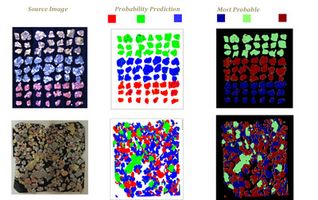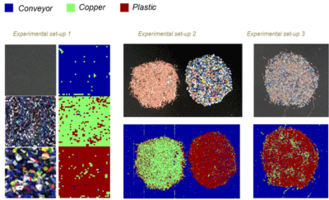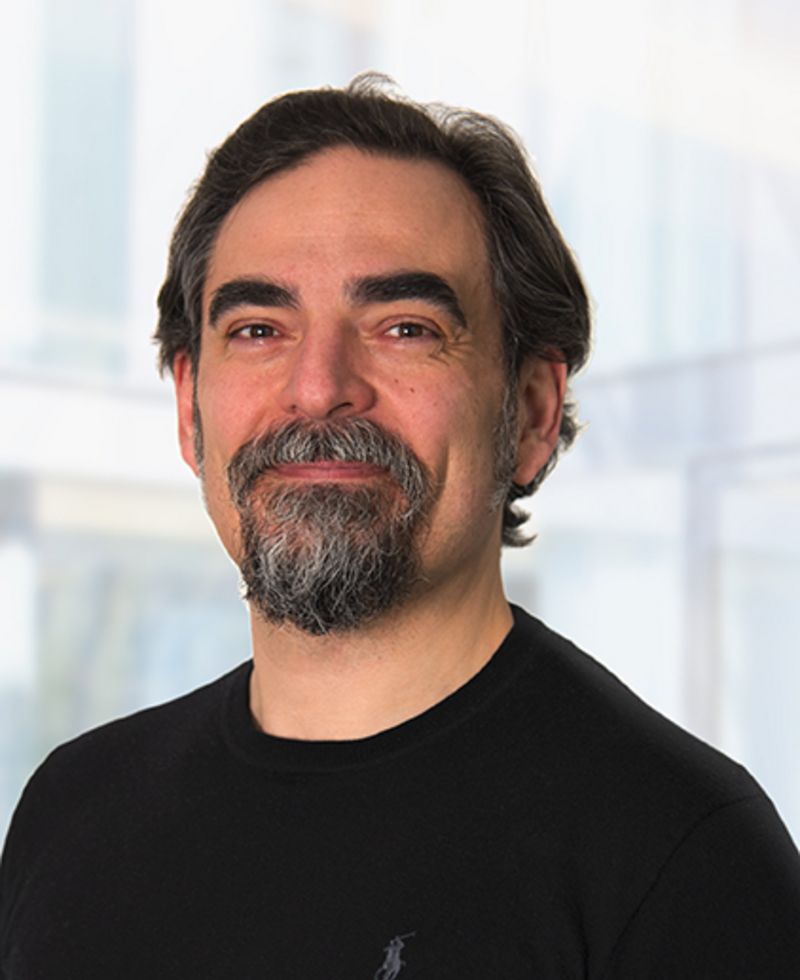Hyperspectral imaging for the online characterization of fine mixtures in WEEE mechanical recycling systems
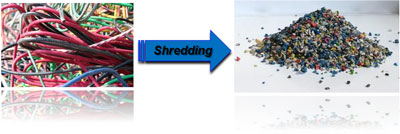
Demanufacturing Pilot Plant - Recycling Cell at ITIA-CNR, Via bassini 15, Milan, Italy
The recycling market is one of the key industries for closing material loops and achieving global sustainable development.
Waste from Electric and Electronic Equipment (WEEE) is the fastest growing waste stream in the EU, with a 5 % increase per year. Today, 15 % of this potentially hazardous waste is disposed as unsorted and only 40 % are recycled and reused.
This scenario calls for the development of a new, smart recycling technology to develop an economically and environmentally sustainable solution.
Under this premise, a fast and flexible vision system for the characterization of waste from electric and electronic equipment at fine fractions has been realized within a large research project to build a completely automated de-manufacturing plant for mechatronic components.
The system is based on hyperspectral imaging (HSI) and combines two hyperspectral cameras and two illumination units from Specim provided by LOT-QuantumDesign.
Thanks to HSI, Specim cameras which provide the highest optical quality (sub-pixel aberrations) and resolution, robustness and reliability, the recycling system successfully mastered severe challenges in preliminary studies carried out on electrical cables:
- Integration of this approach in an on-line remanufacturing plant
- Development of innovative procedures, based on the analysis of NIR (900 nm – 1700 nm) spectral features, for the on-line mixture characterization to perform both sorting of metal and non-metal fractions and the quality control of End Of Life (EOL) products and the different flow streams inside the recycling plant
- Application of this technique to very fine products (< 2 mm).
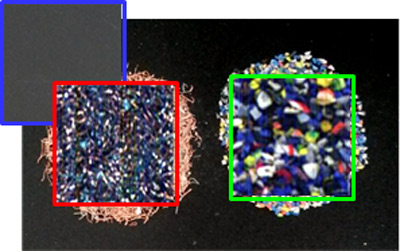
Conveyor (uniform grey square), copper (left square), plastic (right square).
Benefits
- Real-time control: on-line feed-forward control loop for adaptive recycling systems
- Quality control: determine the purity level of separated materials
- Recycler for continuous visibility of the mixture size, shape and composition gathered in-line and during the process, thus avoiding expensive and time-consuming off-line sampling material characterization procedures such as x-ray diffraction (XRD) or x-ray fluorescence (XRF) and mass spectroscopy
HSI is a technique that combines the imaging properties of a digital camera with the spectroscopic properties of a spectrometer. It collects spectral information at each pixel of an image, with the objective to identify/quantify the chemical components and evaluate their spatial distribution in the analyzed image.
HSI-based systems are innovative, flexible and low cost tools
The initial purpose to apply this technique to very fine products in order to implement a classification model was achieved with plastic particles < 1.4 mm, copper wires of variable lengths and a section of about 300 µm.
The next step was to move to more complex targets, feeding the system with PCBs shredded to a size of 0.5/1.0 mm, analyzed in the VNIR region (400 nm – 1000 nm).
The first results show the ability of sorting pure copper, iron compounds and brass. The aim is to expand the sorting capability to all metals for a complete recycling of mechatronics component materials.
Research Group:
Prof. Marcello Colledani (coordinator), Dr. Nicoletta Picone (ITIA-CNR), Dr. Monica Pepe (IREA-CNR), Dr. Gabriele Candiani (IREA-CNR)
More information on hyperspectral cameras


